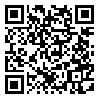BibTeX | RIS | EndNote | Medlars | ProCite | Reference Manager | RefWorks
Send citation to:
URL: http://journal.itrc.ac.ir/article-1-173-en.html
Artificial immune systems have been proven to be efficient in pattern recognition, data clustering and data classification. The proposed method is a novel artificial immune classifier called aiCLS based on aiNET. Artificial immune network (aiNET) is an efficient data analysis and clustering algorithm capable of clustering simple datasets through complex ones. Hidden capabilities of aiNET for supervised learning were significantly considered by aiCLS. The proposed method takes a local optimization approach to classification problem. It generates local optimum cells to recognize any given training antigen. Concatenation of these cells results in a global optimum classifier. The novelty of aiCLS has been discussed from both computational and immunological aspects. From the computational aspect, aiCLS is a fast one-shot learner algorithm with regard to the proposed “iterative clonal selection”. From the immunological aspect, aiCLS introduces a novel clonal suppression method called “dissimilarity proportional clonal suppression (DPCS)”, which increases data reduction and convergence to local optimum for any given antigen. DPCS alters convergence through a greedy suppression, which takes antibody-antigen affinity into account. The experimental results show that aiCLS outperforms artificial immune recognition system (AIRS) on UCI benchmark datasets in both classification accuracy and data reduction.
| Rights and permissions | |
 | This work is licensed under a Creative Commons Attribution-NonCommercial 4.0 International License. |




